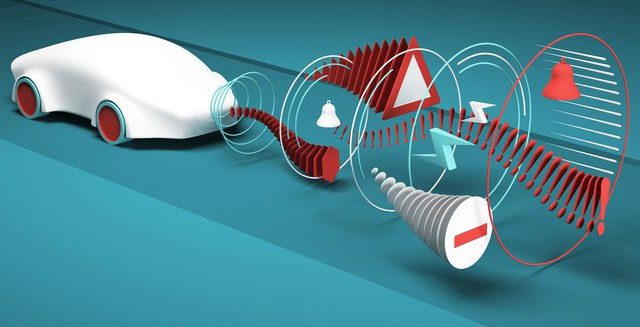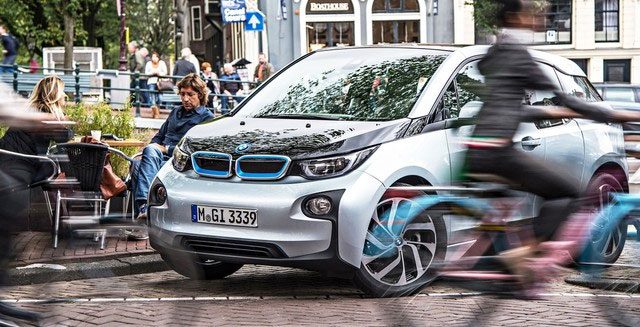Hybrid vehicles and electric cars have certain advantages over gasoline-powered vehicles. However, in some respects, they also pose risks, particularly concerning pedestrian safety.
Electric vehicles and hybrids are at the forefront of our sustainable transition. Globally, electric cars are gradually replacing fossil fuel-powered internal combustion engine vehicles, reducing air pollution and addressing the climate crisis. However, these “invisible” vehicles – they are too quiet, which can be dangerous for pedestrians, especially in urban areas.
A recent study published in the Journal of Epidemiology & Community Health analyzed pedestrian fatality rates in the UK from 2013 to 2017. It revealed a significant difference in the casualty rates per 100 million miles traveled between the two types of vehicles – electric and internal combustion engine vehicles: an average of 5.16 people were struck by an electric or hybrid vehicle for every 100 million miles, compared to 2.4 for internal combustion engine vehicles.

Electric vehicles are too quiet, which can be dangerous for pedestrians. (Illustrative image).
In urban areas, electric vehicles are three times more likely to collide with pedestrians than in rural areas. This discrepancy is attributed to the lower noise levels in rural settings, allowing electric vehicles to be more easily detected compared to the noise-saturated urban environment, where the sounds produced by electric vehicles are nearly undetectable.
Why is this happening?
The study did not directly analyze the causes behind this difference. However, researchers suspect several contributing factors.
The first factor is unrelated to the vehicles themselves; rather, drivers of electric vehicles tend to be younger and less experienced, which may lead to a higher number of accidents. Another explanation may relate to the fact that electric vehicles operate much more quietly than internal combustion engine vehicles.
Internal combustion engine vehicles generate substantial noise, typically around 70 decibels—equivalent to the sound produced by a washing machine or vacuum cleaner. In contrast, electric motors are nearly silent. Since 2021, many countries worldwide have mandated that electric vehicles must be equipped with sound generators, with a minimum sound level of 56 decibels—roughly equivalent to the noise of a refrigerator or a high-performance computer, but still the noise produced is significantly less than that of a vehicle with an internal combustion engine.

Drivers of electric vehicles tend to be younger and less experienced, which may lead to more accidents. (Illustrative image).
Making Electric Vehicles Safer
Researchers emphasize the necessity of mitigating these risks as the use of electric and hybrid vehicles continues to rise. They propose several strategies that could enhance pedestrian safety, including:
- Sound alert systems: An immediate solution is to implement mandatory sound alert systems for electric vehicles, especially at low speeds. These systems could emit sounds to alert pedestrians of an approaching vehicle, potentially recreating the noise produced by traditional engines. This might be the optimal solution since it has already been implemented in several countries; we just need to make the sounds louder. However, retrofitting existing vehicles with this system poses a challenge.
- Urban design adjustments: City planners can play a crucial role by redesigning urban landscapes to prioritize pedestrian safety. This includes better crosswalks, more pedestrian zones, and traffic control measures that reduce vehicle speeds in heavily pedestrian areas.
- Community awareness campaigns: Educating both drivers and pedestrians about the specific risks associated with electric and hybrid vehicles can foster a culture of vigilance and safety. Pedestrians need to be aware of the quieter nature of these vehicles, while encouraging drivers to exercise caution, especially in crowded pedestrian areas.

Transitioning to electric and hybrid vehicles is a crucial step in combating climate change. (Illustrative image).
Despite the higher risks to pedestrians, electric vehicles still offer numerous practical benefits, both directly and indirectly.
Because they are emission-free, they reduce urban pollution, which in turn lessens asthma and other respiratory issues that significantly impact lives and resources. A recent report from the American Lung Association estimated that replacing internal combustion engine vehicles with zero-emission vehicles by 2035 could prevent 89,300 premature deaths by 2050 in the U.S.
Additionally, the report predicts this transition would alleviate 2.2 million asthma attacks and reduce 10.7 million lost workdays, equating to nearly $978 billion in public health benefits. However, realizing these benefits depends not only on changing engines. It requires a broader transition to clean energy sources such as wind, solar, hydro, geothermal, and nuclear energy.
The shift to electric and hybrid vehicles is a vital step in combating climate change and improving air quality. However, this progress must be balanced with considerations for public safety. As governments worldwide push to phase out fossil fuel-powered vehicles, addressing the increasing risks posed by these quiet-operating vehicles to pedestrians, especially in urban environments, is essential.




















































